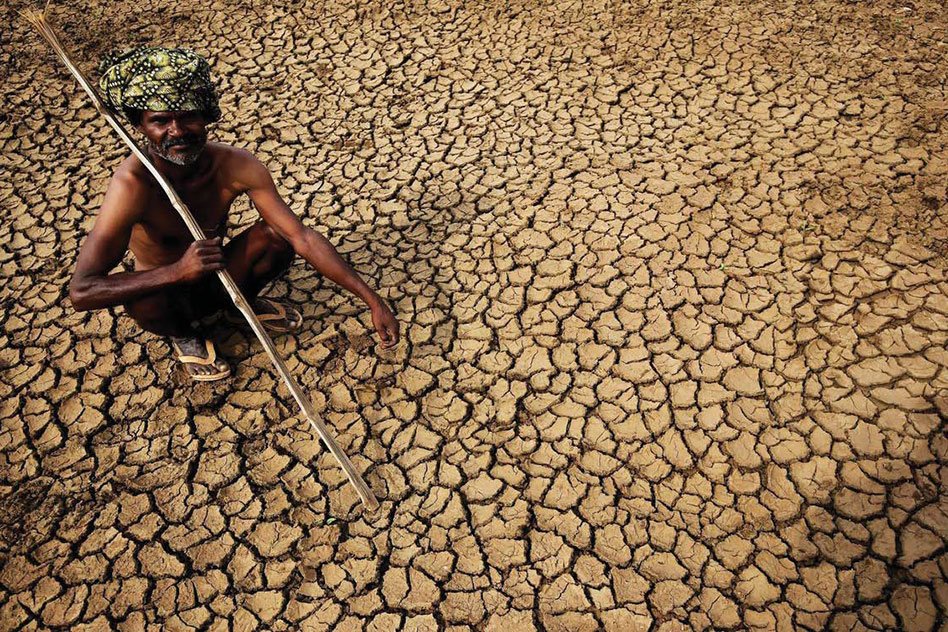Image Source: sustainabilitynext
It was disheartening to see Section 144 of IPC being imposed in Latur (district of Maharashtra) to avoid any law and order problem, possibly fearing “water-riots”. The Marathwada region is facing acute shortage of water, something not seen in the past decade. The dualism of civil water shortage and agrarian distress has left behind a reign of terror in the region. An important factor causing this distress is the inefficient water use all over the country in general and Marathwada in particular. This has serious ramifications since agriculture in India consumes more than 80% of water. Although water is one of India’s most scarce natural resources, India uses 2 to 4 times more water to produce a unit of major food crop than does China and Brazil.
Misuse of water
Since last 68 years, we have invested resources on irrigation; both public (e.g. canals) and private (e.g. tube wells). In both the cases, water has been deployed via “flood” irrigation, which is an extremely inefficient use of water.
Declining water table
A key factor undermining the efficient use of water is subsidies on power for agriculture. Apart from its benefits towards farmers, it incentivizes wasteful use of water and hastens the decline of water tables. According to an analysis by NASA, India’s water tables are declining at a rate of 0.3 meters per year. We consume more water than our reservoirs can fill up.
Sugarcane as the culprit
Sugarcane is a thirsty crop, far thirstier than Marathwada can sustain. Since it needs to be watered around the clock for a year, farmers often connect pipes to the field and leave the water running. When water from traditional sources run out, they sink bore-wells at huge personal expense. This also raises the cost of production. When those bore-wells too run out, they go deeper and deeper. At some point, it’s inevitable that groundwater will run out.
Farmers plant sugarcane because it brings immense profits through a network of government-promoted subsidies that include a minimum support price to farmers and incentives for starting sugar factories. This is also the case of notorious dam contractor-politician nexus, which has resulted into expansion of sugarcane in semi-arid regions. Marathwada has around 40% of Maharashtra’s 205 sugar factories!
Water exporting agriculture
Irony is that we (being a water-scarce country), have been “exporting water” as a result of distorted incentives. Here we estimate water content embedded in crops at the time of trade. Water “embedded” in crops is the water content of each crop and once the crop is exported, it cannot be recovered. In 2010, India exported about 25 cu km of water embedded in its agricultural exports. This is equivalent to the demand of nearly 13 million people. It is interesting to note that India was a “net importer” of water until around 1980s. With increases in food grain exports, India has now become a net exporter of water. China remains a net importer of water. This is also evident in China and India’s trade patterns. China imports water-intensive soybeans, cotton, meat and cereal grains, while exporting vegetables, fruits and processed food. India, on the other hand, exports water-intensive rice, cotton, sugar and soyabean.
Way forward
- Irrigation investments must shift to adopting technologies like sprinkler and drip irrigation and rainwater harvesting (leveraging labour available under the MGNREGS where possible). In order to facilitate this shift, the new irrigation technologies need to be accorded “infrastructure lending” status (currently accorded to canal irrigation) and both the centre and states need to increase public spending for micro irrigation. The consolidation of ongoing irrigation schemes into the Prime Minister’s Krishi Sinchayi Yojana (PMKSY) offers the possibility of convergence of investments in irrigation, from water source to distribution and end-use.
- Public procurement at MSP has disproportionately focused on wheat, rice and sugarcane. This has led to the crisis we are witnessing. Pulses are a potential crop that we should focus on. The social returns to pulse production is higher than the private returns, because it not only uses less water and fertilizer but also fixes atmospheric nitrogen naturally and helps keep the soil porous and well aerated because of its deep and extensive root systems.
- The perennial inter-state water disputes should be solved amicably. Sates should shun narrow interests and co-operate in this regard, keeping general public interest in mind
- Water storage capability is poor in the region at large. Immediate fixation of this issue should be a top priority of government agenda
The Logical Indian is hopeful that the country focuses on improving the efficiency of water use in agriculture. It is high time that we need to rethink our ways of water usage, given that our food-providers are ending their lives in quicker succession than ever.
-Sachin Jadhav











